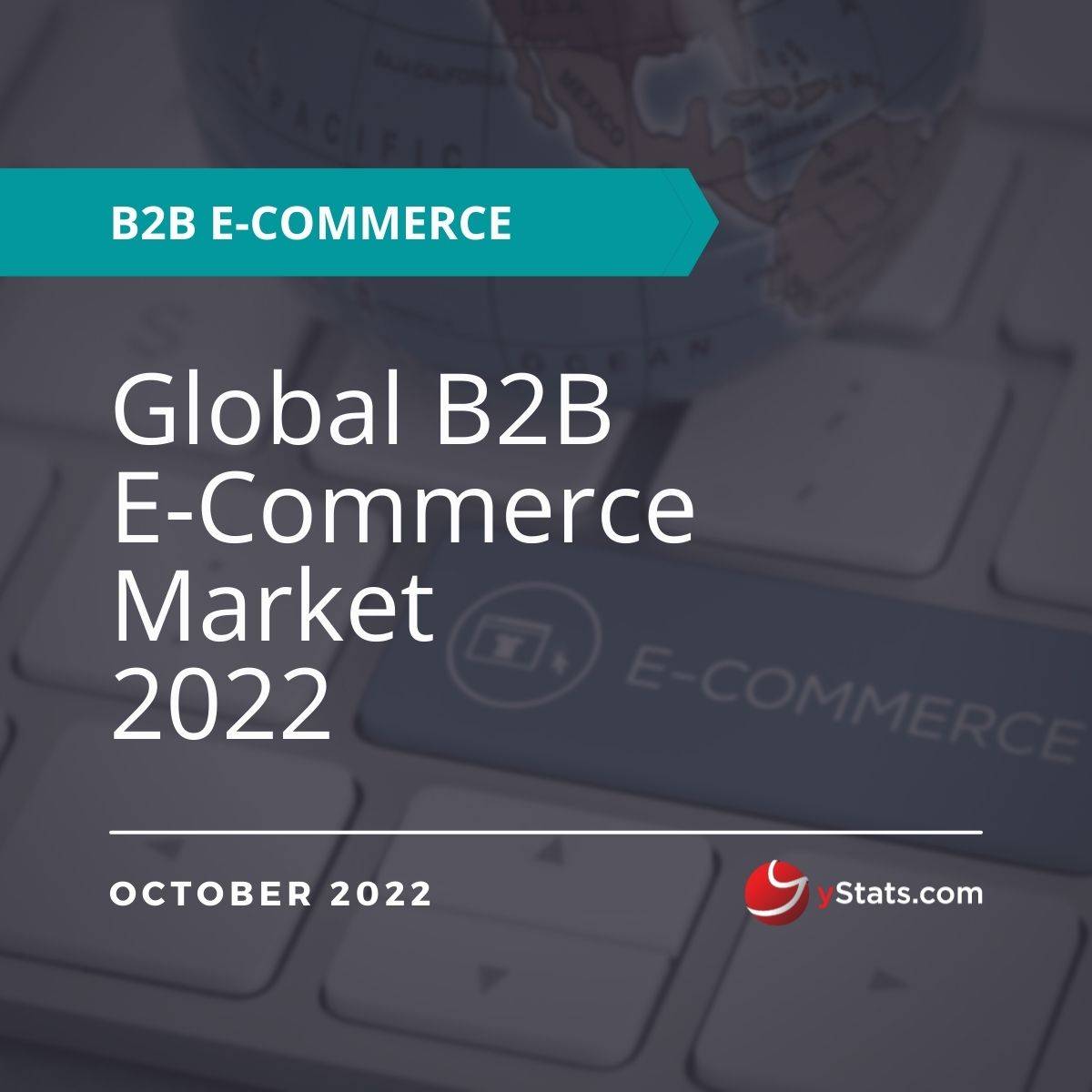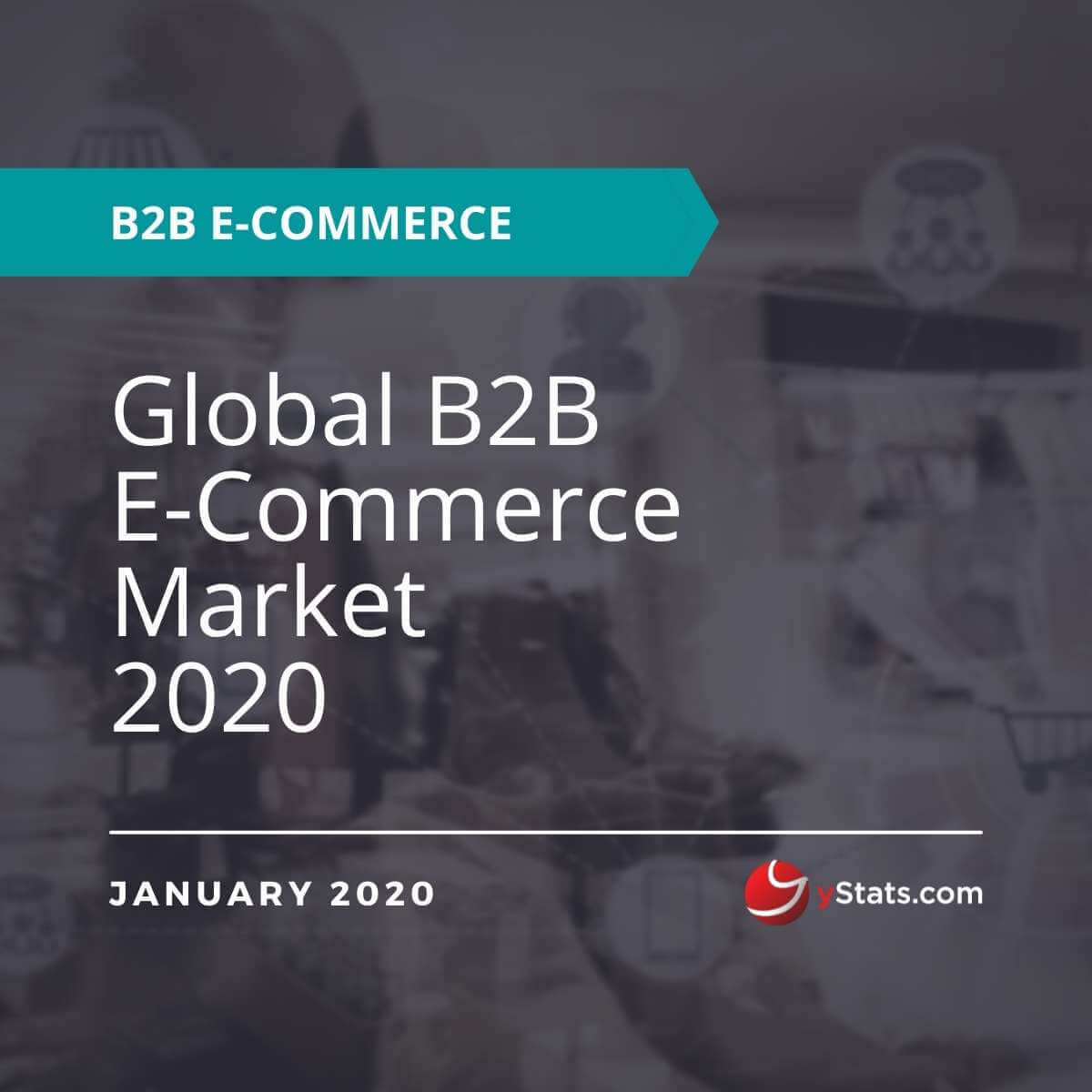Description
Countries covered: Brazil, China, Germany, India, Indonesia, Italy, Japan, Mexico, Poland, Spain, Thailand, UK, USA.
Pages: 93
Publication Date: 04/10/2022
Questions Covered in the report:
- What is the projected development of the B2B E-Commerce market in the next few years?
- Which are the most common B2B E-Commerce channels through which buyers buy products and services?
- What are the emerging trends that dominate the B2B E-Commerce market?
- Which are the leading B2B marketplaces across various regions?
Key Findings:
The B2B E-Commerce market is forecasted to see continuous growth across regions, with nearly half of B2B buyers shifting from traditional to online channels of purchase: new yStats.com report.
After an acceleration in the pandemic era, digital B2B E-Commerce channels worldwide continue to flourish
The pandemic era led to greater adoption of B2B E-Commerce among B2B buyers and sellers alike. As of 2022, most B2B sellers have moved their operations online, as stated in the new yStats.com report. This rise in adoption is forecasted to increase the B2B E-Commerce sales worldwide by 2027. Not only are B2B buyers using digital channels for researching and buying products and services, but also a majority of the buyers are using digital platforms for simple buyer-seller interactions. B2B E-Commerce sales made via marketplaces are forecasted to account for an increased share of total global B2B E-Commerce sales. Furthermore, online channels were heavily utilized by businesses to make repeat and bulk B2B purchases. The latest yStats.com report also reveals that nearly three-quarters of B2B merchants have already built their own marketplace as of December 2021. In terms of cross-border B2B E-Commerce sales, China maintains a strong position in the Asia Pacific market, expecting to see a peak in its growth rate of cross-border B2B E-Commerce sales in 2022, the growth rate will steadily decline while staying in double digits through 2025. India is also projected to observe a high growth in its B2B E-Commerce sales, growing significantly from 2020 to 2025, as mentioned in the yStats.com publication. The growth curve is also similar for the U.S. as it is also forecasted to maintain double-digit growth in terms of its B2B E-Commerce site sales in 2025. B2B seller expectations in Europe remain positive as they anticipate B2B E-Commerce sales will steadily increase through 2025. The Middle Eastern market will also see a spur in growth in terms of B2B E-Commerce sales.
Although the B2B E-Commerce market is expanding with the introduction of technology trends such as AI, big data analytics, and business process automation, some challenges still remain
As the use of B2B E-Commerce platform increases, customer expectations revolving it are undergoing a change. According to a source cited in the new yStats.com report, nearly two-thirds of B2B buyers expect to have a smartphone-based application to facilitate their online purchases. A majority of buyers give the same or higher weight to online channels as they do to traditional channels and therefore except that B2B merchants meet their expectations. In terms of the most innovative tech trends, big data analytics, AI, self-service portals, and business process automation ate being applied to the B2B E-Commerce market, and an increased number of sellers are now investing in advanced technology to optimize their B2B E-Commerce platforms. Moreover, improvements to E-Commerce platforms and the use of product information management systems as well as customer relation management system remain the top investment areas for 2022. Despite these steps being taken by B2B sellers, the majority of B2B consumers still face challenges, with delivery and tracking, relation with suppliers, and the availability of product information and features ranking at the top of the list of B2B processes needing improvement.






